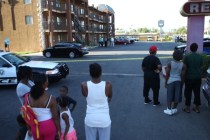Patients find support in hospice care
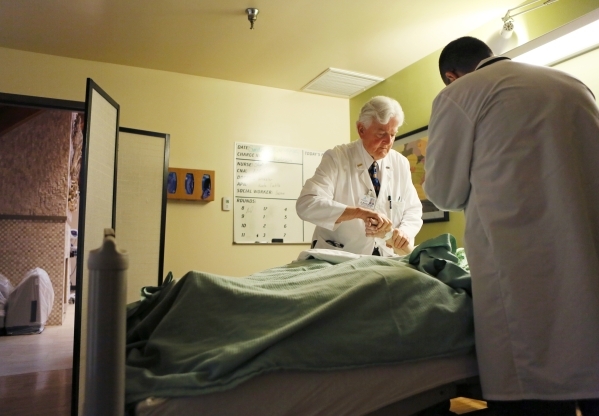
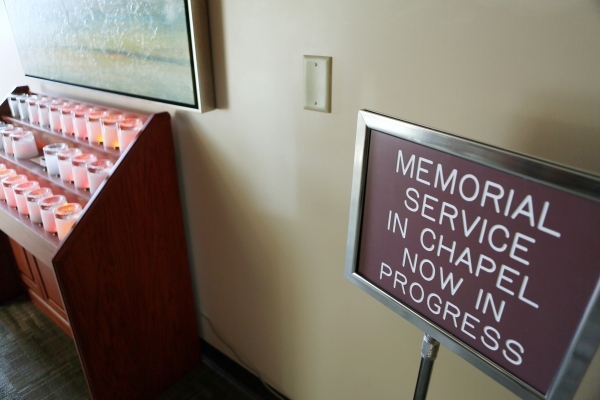
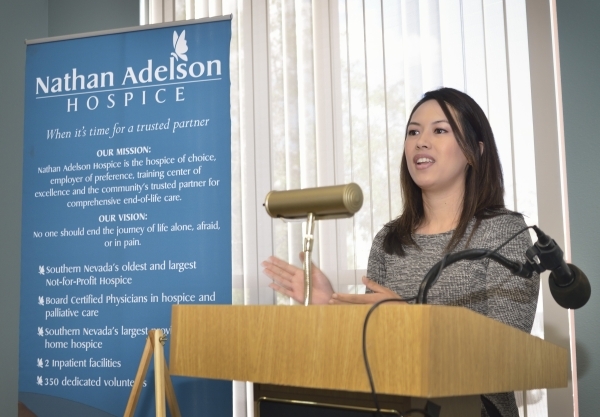

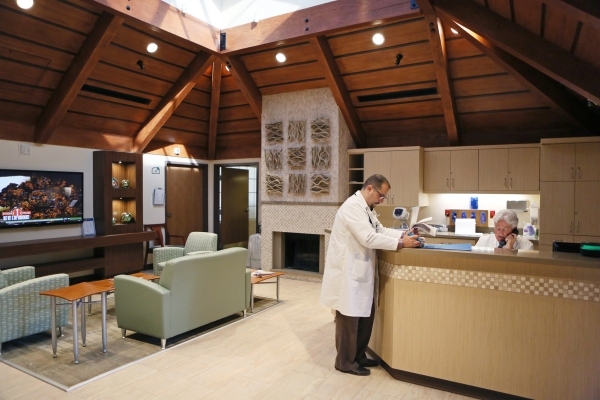
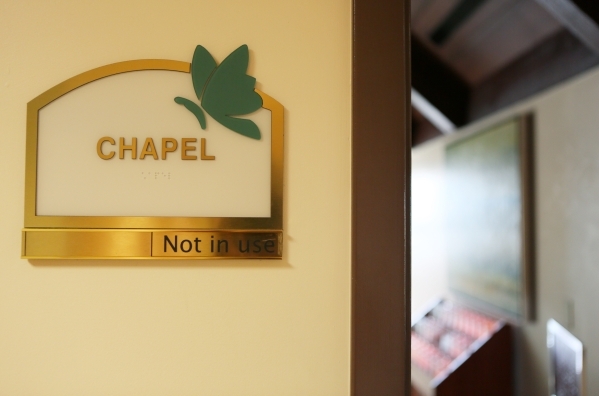

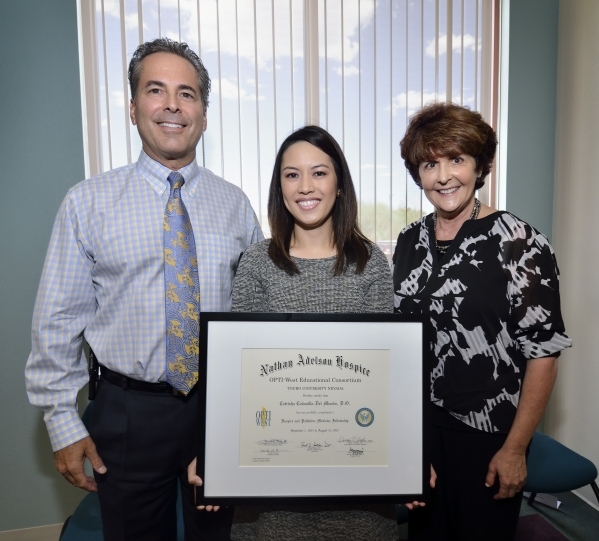
Hundreds of years ago, the word hospice meant only one thing: offering shelter to travelers.
Today, many people see hospice as giving up, doing nothing.
Hospice care providers work to dispel those misconceptions as they change the focus to a different set of goals: comfort and quality of life.
“If you have a patient with intractable symptoms — nausea, vomiting, pain, delirium, whatever it is — you justify going up on doses of medications to assuage the pain and the suffering,” said Dr. Warren Wheeler, the senior director of palliative medicine at Nathan Adelson Hospice. “Your intent is not to hasten their death. Your intent is that when they do die, they’re going to die comfortably, not seizuring, not in pain and not vomiting.”
Hospice is a means of providing compassionate care for people in the last stages of incurable disease, including physical therapy, spiritual and emotional support, companionship, even the fulfillment of lifelong wishes. A hospice referral can be made for patients diagnosed with a terminal illness who have a life expectancy of six months or less if the disease progresses along its expected course.
Palliative care should be an option for patients of any age who have a chronic health issue that will endure, change or get worse over time.
“Palliative care can apply to someone with juvenile diabetes with neuropathy at age 13 who could live for another 30 or 40 years,” Wheeler said.
Hospice gives the patient and their family the opportunity to live as wholly and comfortably as possible.
Getting Hospice Care
In Southern Nevada, four hospice facilities have a total of 62 beds, and 48 agencies deliver hospice care, mostly in the patients’ homes.
Nevada had 10,697 total Medicare hospice patients who spent 878,403 total days in hospice care in 2013, according to the California Hospice and Palliative Care Association. Nevada had the highest mean Medicare reimbursement per beneficiary at $15,151; the national mean is $11,444.
Nationally, the median days of care were 18.5 days, meaning half of hospice patients lived less than 18.5 days and half more, according to the National Hospice and Palliative Care Organization. The U.S. average hospice stay was 72.6 days. In Nevada, the median was 29 days and the average 82 days.
Southern Nevada hospice services benefit from a fellowship that is a joint effort of Nathan Adelson and Touro University Nevada School of Medicine. In September, Dr. Catrisha Cabanilla-Del Mundo was the first graduate of that fellowship, and three more doctors were welcomed into the program. Cabanilla-Del Mundo has been hired by Nathan Adelson, and the goal is that future graduates will practice in Southern Nevada.
Nevada’s higher reimbursement per beneficiary figure is directly related to the longer stays for hospice patients, said Judi Lund Person, a vice president for the national group. Hospice providers and advocates say shorter stays mean the care team has fewer opportunities for anything more than respite care, which provides temporary rest and relief for the patient and family.
“When the stay is longer, there is time for patient and family closure,” Lund Person said. “The hospice team can provide a wide variety of services.”
The paramount need is to honor the wishes of the patients. Over time, patients and family members can receive spiritual support, caregiver assistance and grief counseling. Family meetings led by professionals can improve communication and help isolated family members who have withdrawn into worry or grief.
“When patients wait until they are within days of the end of life to embrace hospice services, they lose the opportunity to do all these things the way they would like to do them,” said Deborah Walker, director of case management at MountainView Hospital.
That’s given rise to the notion that hospice care is equivalent to assisted suicide or the more recent concept of continuous sedation until death.
“I don’t like the term palliative sedation,” Wheeler said. “It implies that there’s nothing more we can do, so we’ll just sedate them and let them die.”

Early care
A 92-year-old patient was flown to Sunrise Hospital and Medical Center in September from Arizona with a condition that obstructs blood flow from the heart to the rest of the body. The woman also had cancer of the uterus. After a procedure to replace a faulty heart valve she remained on a ventilator, her abdomen bloated, which required another surgery. She never regained enough strength to give her doctors confidence she could breathe on her own.
She died three hours after family members decided she should be taken off the respirator.
“I should have been consulted at Day One, and I would have met with the patient and family and explained everything to them,” Wheeler said. “Would she have been eligible for hospice? Absolutely, and she probably would have lived another three, four, five or six weeks on hospice.”
“It is definitely the curative approach,” added Lynn Stange, Nathan Adelson’s chief compliance officer. “They’re using every possible option, and when there are no more curative options, then it’s this all-of-a-sudden referral to hospice. They could have benefited from hospice much earlier.”
Part of the reason delaying a hospice referral can be the doctor’s belief that interventions will save lives, heal families and effect profound and universal good. Pop culture frequently depicts heroic recoveries from seemingly life-threatening situations.
All that works to the disadvantage of practitioners in palliative and hospice care because they focus on treating pain, stresses and symptoms, not seeking a cure. Misconceptions swirl around hospice care perhaps more than any other branch of medicine in part because patients must agree to stop receiving curative treatment for their disease to get the referral.
“A lot of people are looking for miracles because of our advanced medical technology,” said Ellie Powell, Valley Health System’s clinical nurse ethicist. “I tell patients that God works miracles in different ways. That might not be making your loved one better, but it might bring your family together.”
The miracle is not keeping the patient alive with technology, but whether the patient can survive without the technology.
Prognoses and treatment options often are moving targets, and some medications and procedures have lower chances of effecting change. Doctors must balance the needs of keeping patients optimistic and positive about their recovery with the reality that treatments, medications and procedures are unlikely to lead to a cure.
Dr. Paul Michael, an oncologist with Comprehensive Cancer Centers of Nevada, relies on data about survival rates based on how other patients have fared facing a particular disease.
“I always have a caveat: After I present the data, I say, ‘You are unique,’ ” Michael said. “That’s very important with melanoma and brain tumor patients because new treatments are changing the statistics dramatically.”
Early discussions about the benefits of hospice care can help give patients and families the perspective they need.
“Doctors can be overly optimistic,” said Dr. Alia Tuqan, a geriatrics physician with the University of Nevada School of Medicine in Reno. “If we’re honest in terms of prognosis while still being empathetic and supportive, that will be what’s best for the patient. When we are honest, patients can plan accordingly. When they do realize they have a terminal condition, they might decide they don’t want to go the hospital.
“They might want to stay at home and be comfortable and spend their last days in their home, doing what they like most, being with their family.”
Contact Steven Moore at smoore@reviewjournal.com or 702-380-4563.
One sure bet: Death in Las Vegas












